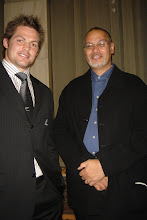 It seems such a pity that this time period is almost ignored or downplayed in many of our older history’s. As you will have found reading through the Handout it was a period of real drama, tragedy, ruthlessness and heroism. The timeline doesn’t really do this event justice – I blamed the lack of space but also a full chronology would have been unnecessarily complex and confusing for our purposes.
It seems such a pity that this time period is almost ignored or downplayed in many of our older history’s. As you will have found reading through the Handout it was a period of real drama, tragedy, ruthlessness and heroism. The timeline doesn’t really do this event justice – I blamed the lack of space but also a full chronology would have been unnecessarily complex and confusing for our purposes.First lets look at traditional Maori warfare. It usually meant fighting between closely related Hapu. These Hapu sometimes joined together to fight as an Iwi against their wider relations that bordered their lands. Rarely did they venture beyond this, although they might in order to support their (related) neighbours against other (unrelated) Iwi. Apart form anything else they could not carry enough food to sustain a long campaign.(it makes better sense on the whiteboard). The musket and the potato changed this, allowing taua like te Amiowhenua in 1819 and 1822 to be away for almost 18 months.
The wars have also been called the ‘Potato’ wars based on the idea that it was the growing of the humble spud which allowed Maori to supply large enough quantities to trade for the Musket.
It could be called the UTU wars. Hongi sought revenge for “The Feast of Seagulls’ at Moremonui (1808) and the capture and sale of his kinswomen by the Venus in 1806. It seems that his fostering of relations with the Missionaries and trip to
It also meant that when the gifts he received fell short of what he needed he was happy to sell Baron de Theirry 40,000 acres of land at the Hokianga. (Hongi of course came from the
Together with Te Morenga, in 1818 he fell upon the Whanau-a-Apanui and Ngati Porou for the killing and eating of their kin. He claimed to have laid waste to 500 kainga and pa in the time he was away. Hongi waited 17 years to seek final vengeance against the Ngati Whatua driving the remnants into the
(New 2008) Its interesting to note that Hika waited so long to exact revenge. Utu was incredibly important and the loss of brothers and the awful death of his sister left a lasting desire for revenge in Hika. This did not stop him from allowing Ngati Whatua to accompany the Ngapuhi on te Amiowhenua. This seems to be because in 1818 the two Taua had only 50 muskets, luckily the Iwi they faced had none. It seems that Belich's THREE stages is important here. Hika was in the first stage in 1818, having some guns. He needed to find more guns in order to reach stage 2 thus his trip to London to find those 'thousand thousand guns'. Reaching stage 2 before anyone else really sparked the arms race that would typify the 1820's and 1830's.
Even the
 Te Rauparaha’s rampage against the Nagi Tahu appears to have been as much a grab for the riches of Pounamu, but it was also in revenge for the death of a Ngati Toa chief at Kaiapoi . His capture of a Ngai Tahu chief who was subsequently tortured and killed (including the drinking of blood and eating of eyes). The use of the
Te Rauparaha’s rampage against the Nagi Tahu appears to have been as much a grab for the riches of Pounamu, but it was also in revenge for the death of a Ngati Toa chief at Kaiapoi . His capture of a Ngai Tahu chief who was subsequently tortured and killed (including the drinking of blood and eating of eyes). The use of the
It also becomes complex when you try to figure out who fought who for what reasons. Complexity can be seen in the fact that despite harbouring a need for utu Hongi allowed Ngati Whatua to join the Amiowhenua expedition only to turn on them later when it suited him (Revenge a dish best served cold?).
We need to consider to the effects of the musket, most Historians seem to agree that the Musket did not increase the Maori propensity for war, it just made the effects worse. (Ballara) The potato allowed Maori to trade for guns, as well as giving them a more reliable and transportable food supply – carried on the backs of slaves who themselves were a source of food.
Tribes that lacked guns suffered horrendous losses. The massacre of Arawa at Mokoia island is just one example. Thousands of slaves were taken and used in the production of even more potatoes (and moko mokai) for trade. Tribes were reduced in number, eradicated or displaced. Large areas of the country were depopulated or left wastelands.
Iwi like the Ngati Whatua were forced to live with their Waikato kin while they waited ‘for the coast to clear.’ Others like the Ngati Toa abandoned their lands altogether to move to Kapiti, attacking many Iwi along the way.
As each tribe suffered attacks and loss they then began to seek Europeans, either Missionaries or Traders who could supply guns. They changed their lifestyle and economy to acquire the one thing that could protect them. The ripple effect moved from north to south, mainly from Ngapuhi down. Ngai Tahu in the deep south had whalers/sealers who supplied them with guns, which severely weakened northern Ngai Tahu and left them vulnerable to the Ngati Toa.
Other tribes went offshore to use their muskets. Ngati Mutunga attacks on the





No comments:
Post a Comment